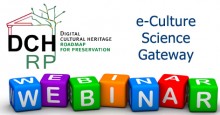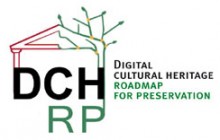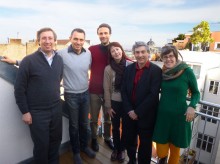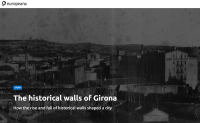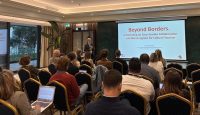An international conference ‘Use, Re-Use and Access’ was held in Dublin Castle on 17 June 2013. Hosted by the Irish Presidency of the European Union and Linked Heritage partner the Local Government Management Agency, the conference attracted an international audience of cultural heritage and memory institutions and numerous representatives of Irish local and national memory institutions.
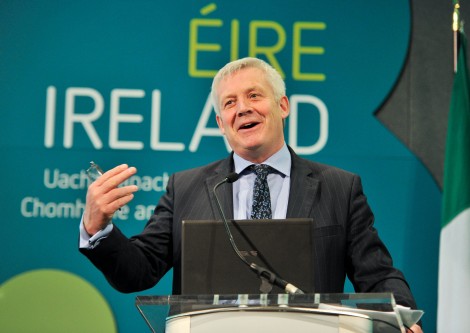
Mr. Fergus O’Dowd, T.D., Minister of State, Department of the Environment, Community and Local Government
The conference was opened by Irish Minister of State at the Department of the Environment, Community and Local Government, Fergus O’Dowd, TD, who spoke enthusiastically of his own experience in using the internet for family history and local studies research. The Minister expressed strong support for the re-use of cultural and heritage information in education and research.
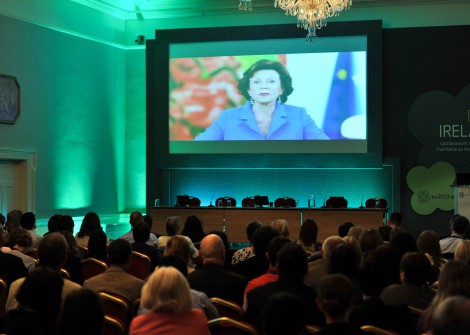
Delegates in St. George’s Hall, Dublin Castle, watching a video address from Mrs. Neelie Kroes, Vice-President of the European Commission
The Minister’s address was followed by a video message from Commissioner Neelie Kroes (see the full video message here), who unfortunately was unable to attend the Conference in person. Commissioner Kroes emphasized the importance of an open approach to information sharing, and highlighted the role of Europeana.
The conference continued with a series of exciting presentations, addressing complementary aspects of the digitization and subsequent re-use of cultural heritage material from around Europe, including:
– Javier Hernandez-Ros, the Head of Unit ‘Creativity’ at the Commission, focused on the challenges and opportunities for digital culture. He also outlined the budgetary constraints for culture in the coming EU programmes (download the presentation in PDF).
– Prof Jon Drori, UK national expert, gave an insightful presentation on the strategic pitfalls which can befall digital cultural projects, and offered 15 Golden Rules for avoiding them (download the presentation in PDF).
– Frederic Bokobza of the French Ministry of Culture outlined the French national investment program, which, despite the financial constraints on public spending, is establishing a spectrum of large digitization public-private partnerships, with strong focus on long-term return on investment (download the presentation in PDF).
– Lord David Puttnam, Digital Ambassador for Ireland (keynote speaker) spoke extensively on the exciting prospects for education. A particular emphasis was placed on the importance of opening access to cultural assets for re-use, and avoiding unnecessary restrictions (download the presentation in PDF).
– Prof Sara de Freitas presented the work of the Serious Games Institute at the University of Coventry, particularly those games and artefacts that relate most closely to cultural heritage (download the presentation in PDF).
– Rossella Caffo, Director of ICCU, Italy, presented the work of Linked Heritage and its achievements (download the presentation in PDF).
– Paul McSweeney of the Irish Local Government Management Agency gave an overview of Irish digital culture portal Askaboutireland.ie, including practical examples of geo-enabled cultural heritage material and user-generated content (download the presentation in PDF).
– Finally, Ciaran Clissmann, Linked Heritage partner, surveyed recent web and smartphone developments in the mainstream, and how they can offer appealing approaches to solving persistent digitization challenges (download the presentation in PDF).
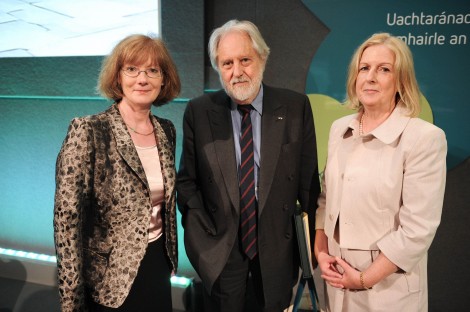
l-r Ms. Annette Kelly, Head of Libraries Development, LGMA; Lord Puttnam, Digital Ambassador for Ireland; Ms. Margaret Hayes, Dublin City Librarian
Conference attendees provided feedback to the speakers in active question and answer sessions. Fruitful and interesting conversations focused on education, re-use, relevant web developments and the potential for cultural tourism. Thanks were expressed by all presenters and participants to the hosting organisations.
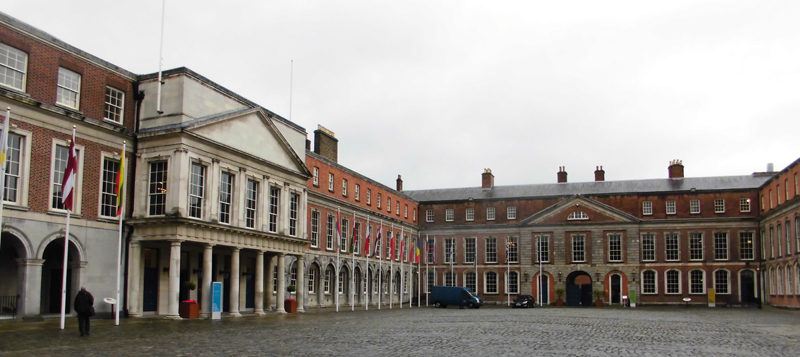


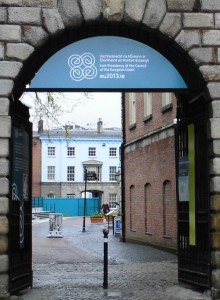
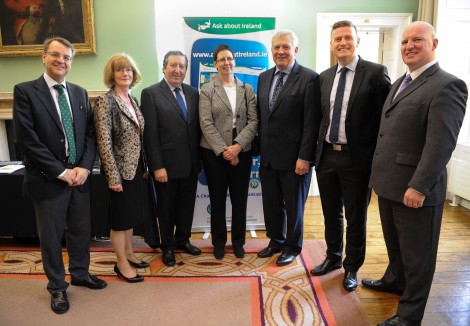








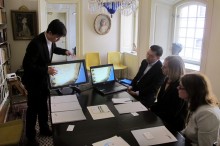
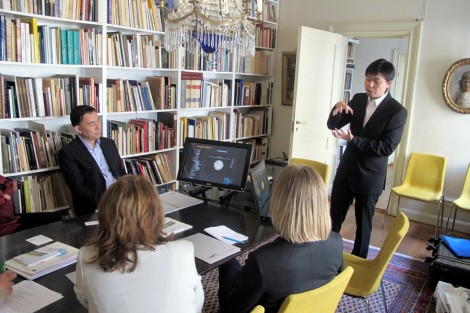
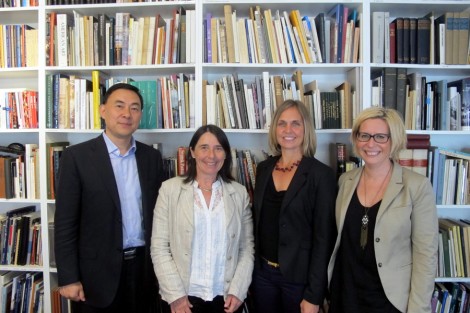
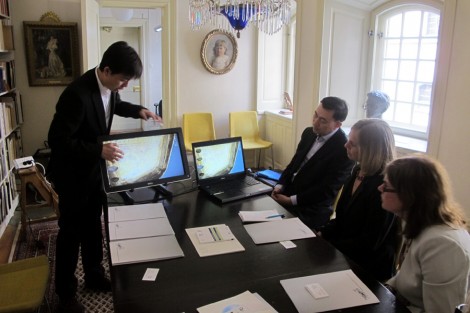

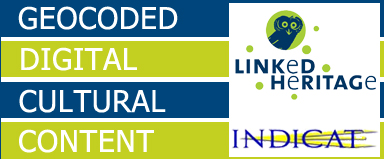 This new book Geocoded Digital Cultural Content, edited by Franc J. Zakrajsek and Vlasta Vodeb (with a foreword curated by
This new book Geocoded Digital Cultural Content, edited by Franc J. Zakrajsek and Vlasta Vodeb (with a foreword curated by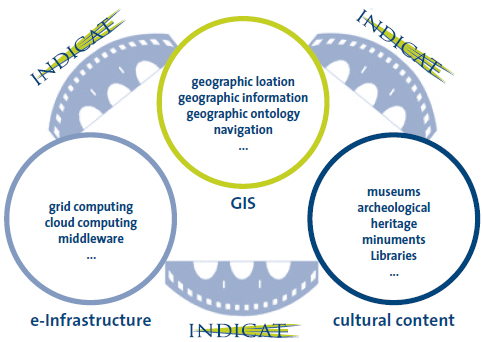

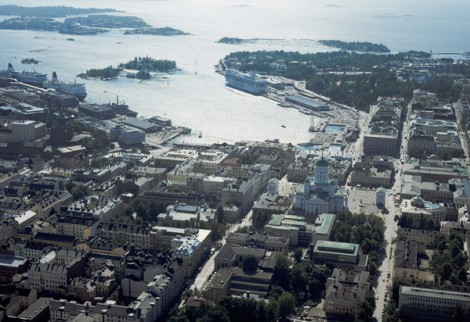 TERENA and SURFnet has organized the second VAMP workshop on September 30th & October 1st, 2013 in Helsinki, Finland.
TERENA and SURFnet has organized the second VAMP workshop on September 30th & October 1st, 2013 in Helsinki, Finland.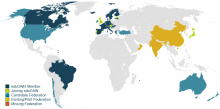
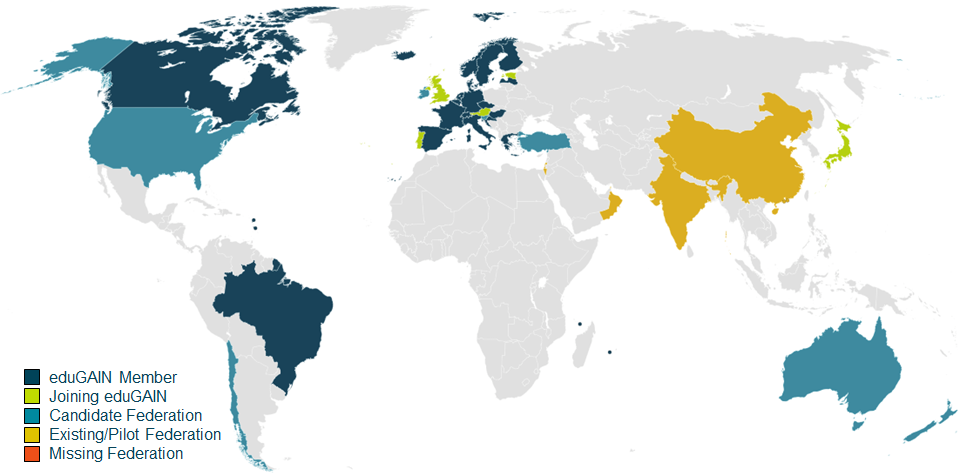
 IDEM* (federated IDEntity Management for service access) frees reasearchers, teachers and students from managing their multiple credentials necessary to access web services.
IDEM* (federated IDEntity Management for service access) frees reasearchers, teachers and students from managing their multiple credentials necessary to access web services.